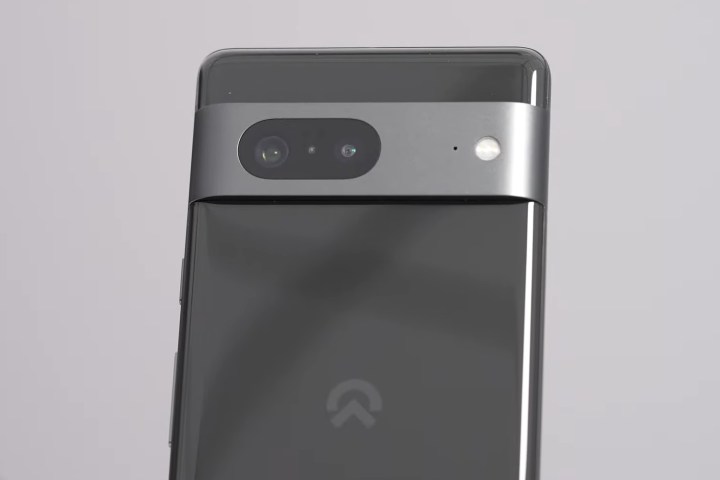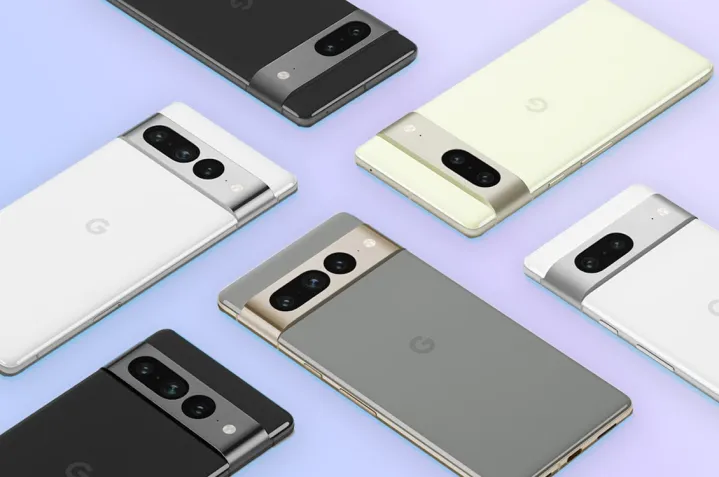Google has already given us an official glimpse at the Pixel 7 series phones via teasers shared at the I/O conference earlier this year. Now, we might have our first real look at the Pixel 7 and its Pro version, and how they stand apart in terms of design and internal hardware.
YouTube channel Unbox Therapy has shared a video that purportedly details prototype units of the Pixel 7 and 7 Pro in their black trims. The camera island is more prominent this time around and flaunts a metallic finish, which is a stark departure from the subdued black glass strip on the Pixel 6 duo. The corners also appear to be more rounded, and similar is the case with the rear glass panel.
Both the phones are powered by the next-gen Tensor chip, with the Pixel 7 Pro prototype offering a 12GB RAM + 256GB storage combo. The smaller Pixel 7 tones things down to 8GB of RAM and 128GB of onboard storage. Of course, more trims with different memory configurations will also be on the table once the phones get an official release, which is rumored to happen in October.
The size difference is stark
There are a few notable aesthetic differences between the two phones. The Pixel 7 Pro rocks a polished metallic frame, while the vanilla model features a matte look on the sides. Noticeably, the size difference between the Pixel 7 and and the Pixel 6 is more pronounced.

The Pixel 7 is noticeably smaller than its direct predecessor and has slightly slimmer bezels. It is also narrower and about 10 grams lighter than the Pixel 6. This might come as a sigh of relief for fans of compact phones, as the Pixel 6 was quite chunky and significantly bigger than the Pixel 5.
Coming back to the Pixel 7 Pro, the display curvature on the side is less pronounced on the sides compared to those on the Pixel 6 Pro. Google also appears to have slightly trimmed the vertical bezels on the

Since these appear to be prototype units, the devices are non-bootable, which means we don’t get a peek at the software. However, both the phones will run Android 13 at launch, which is not much of an aesthetic upgrade over Android 12, but does bring a host of useful tweaks to the table.
What’s inside?
The Pixel 7 Pro will reportedly offer a 6.8-inch high-refresh-rate OLED panel, while the Pixel 7 sticks to a smaller 6.2-inch panel. Coming to the imaging hardware, not much is going to change. The

The Pixel 7 Pro is said to add a 48MP telephoto camera into the mix, complete with a folded-lens periscope zoom system akin to the Galaxy S22 Ultra. Google’s official teasers show the
The Pixel 7, on the other hand, goes with a lemony color tone, alongside more modest all-black and white options. Not much is known about the asking price, but if the Pixel 6 duo is any indication, the price tag for the
Editors' Recommendations
- The Google Pixel 8a’s 6 biggest upgrades over the Pixel 7a
- Does the Google Pixel 8a have wireless charging?
- Does the Google Pixel 8a have a headphone jack?
- Google has no idea what it’s doing with the Pixel Tablet
- The 10 most important things to know about the Google Pixel 8a
